As the world marches forward at a faster pace, any number of important subjects can pile up, waiting for their day in the Weekly Newsletter sun. And while I’d like to cover everything with you, in long form, there’s only so much time in the day. So here, I wanted to share with you several items that have just come up, but in an abbreviated fashion. So here are three for your consideration.
Long Term Care Premiums on the Rise…Again
Genworth Financial Inc., the largest provider of long term care insurance in the world, just received approval from 22 states to raise their insurance premiums on existing and new policies an average of 58%. That’s an incredible increase, especially considering they raised premiums by a very significant amount just a few years ago. So what does this tell us? First, the cost of care is rising quickly, which means people are actually using their policies for their care needs. It also reminds us that persistently low-interest rates have caused the investment portfolios of insurance companies to lag well behind their projections. The result is more money out-of-pocket for many, many retirees may be necessary in order to maintain their long term care coverage levels.
Backdoor Roth IRA Contribution
If you’re a high-income earner and are maxing out your 401(k) as you accelerate toward retirement, saving money inside a Roth may be attractive as a means by which to store away some money that will never again be taxed. The problem is, high-income earners may no longer be eligible to contribute directly to a Roth IRA. An option that most aren’t aware of is something called a ‘backdoor Roth contribution’. By contributing to a non-tax-deductible Traditional IRA, then immediately converting it to a Roth IRA, you’re able to make a Roth IRA contribution even if your income would otherwise preclude you from doing so. I’ve never met a retiree who wished they’d saved less money inside the forever-tax-free Roth, so this may be worthy of consideration. There are some tax nuances to clarify before implementing this strategy but fewer people are using this strategy than probably should.
Payoff the House Early?
Who wouldn’t want a mortgage-free home? A paid-for house is one of the financial goals almost everyone shares, and many consider it THE goal before entering retirement. But when does it make sense to use otherwise investable money – or safe savings – to accelerate the mortgage payoff? This is a bit more complicated as of late because of the change in tax laws, but here’s a general thought to consider. If you’re sitting on a larger than necessary emergency fund in bank savings, CDs, or money market, that low-yielding money is earning you less than the interest on your mortgage may be costing you. In other words, why earn 1% if you’re paying 4%? Additionally, most investors are diversified among stocks and bonds in their portfolio. And while the bond portion has historically been ‘safe’ relative to stocks, it’s very possible that rising interest rates will cause bonds to perform somewhat poorly over the coming years. Therefore, like bank money, the ‘safe’ portion of your portfolio may be earning less than you’re paying to the bank for the use of their mortgage money on your home. Like everything else, careful consideration of tax consequences and other financial factors is key to this decision, but it’s something that may warrant a bit of your attention if you’re serious about becoming debt free in retirement.
So there you have it, three topics that matter, but maybe not all of them matter to everyone. Please let me know your thoughts and send your questions by simply replying to this email.
And before I let you go, please keep an eye out for our upcoming Retirement Elevated classes at BGSU at Levis Commons. Details are in the Steward print newsletter and we’ll share more information in the coming weeks. Please tell a friend! It’s really solid retirement planning content, offered in a classroom setting, and it’s FREE!
All the best,

Adam Cufr, RICP®
Recent Articles

Show Your Work: Why Transparency Matters in Retirement Planning

Unlocking the Mystery of Income Taxes

Social Security Strategy: Do You Have One?

Pension Decision: Just One Critical Piece of Information Is Needed to Decide



